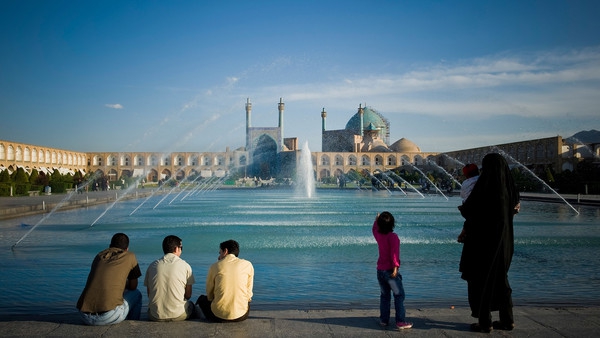 Over the years, I have visited many Middle Eastern capitals, but the Iranian one had remained unluckily out of reach. Then, about two months ago, I received an invitation to give a talk on �Islam, free trade and globalization� in Tehran. I accepted happily.
Over the years, I have visited many Middle Eastern capitals, but the Iranian one had remained unluckily out of reach. Then, about two months ago, I received an invitation to give a talk on �Islam, free trade and globalization� in Tehran. I accepted happily.From the moment I landed, I inevitably compared�Iran�to the other �Islamic� state that I am more familiar with: Saudi Arabia. And, with all due respect to the Saudis, I must say that life in�Iran�looked much freer. The place of women, especially, presented a huge gap. While the sexes are strictly segregated in every public space in Saudi Arabia, Iranian women are present everywhere and look quite equal to men.
The only apparent limitation is that every woman must wear a headscarf. That is simply the law. But even that is not as oppressive as it may sound, too. At last half of the women in Tehran wear headscarves that cover only small parts of their hair, giving them a Sophia Lorenish look. And nobody bans them from driving, as is the case in the aforementioned kingdom.
One must add that�Iran�has democratic institutions such as the Parliament, too, although the authority of those elected is limited by the clergy. Meanwhile, the mere idea of election is still anathema to Saudi Arabia.
Yet still,�Iran�is obviously an authoritarian state. The �guardians� of the revolution work hard to keep the society in check. The Internet is heavily filtered. There is simply no access to Twitter, Facebook or YouTube. The TV in my hotel room had various Iranian channels, mostly state-owned, but there was no CNN, BBC or Al-Jazeera. The society�s access to the outside world is carefully limited.
Then there is the cult of martyrdom. Streets of Tehran are full of murals of martyrs who died for the nation and the religion. But make no mistake: these are not the type of �martyrs� who blow themselves up to kill innocent bystanders. (Those are aptly called terrorists.) The martyrs here are the fallen soldiers in war � the war that Saddam Hussein launched against�Iran�in 1980 with some Western support. Iranians seem to have never forgotten that tragic episode.
The big question is where�Iran�will head. I find the Israeli right�s argument, that Iranians want to build nuclear weapons to fire them at the Jewish State and get obliterated in return, simply preposterous. They seem more motivated by defense rather than self-destructive offense.
As elsewhere, the economy is the key. Today�s�Iran�looked to me like Turkey before Turgut �zal, who, in the revolutionary decade of 1983-93, liberalized what used to be a state-dominated and heavily protected economy.�Iran�might be waiting for its own �zal, too, who will open up borders, ease the restrictions, and promote free markets and free minds.
The good news is there are such progressive Iranians, such as my hosts at the Islamic Federation of Standard and Quality. They apparently wanted to give the floor to more optimistic takes on globalization, which is generally seen as a threat by most Iranians. They also seemed heartened by the moderate leadership of the new president, Hassan Rouhani. The West, particularly the United States, would be wise to give this positive momentum in�Iran�a good chance.
By Hurriyet Daily News
The Iran Project is not responsible for the content of quoted articles.











